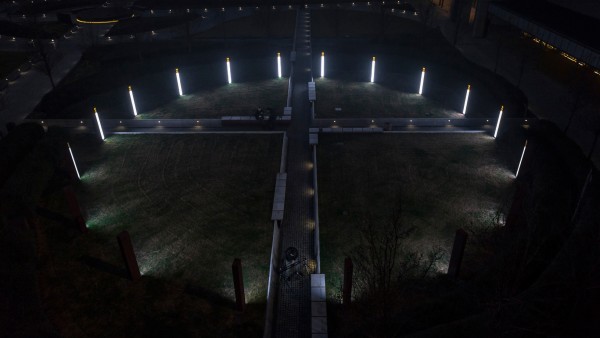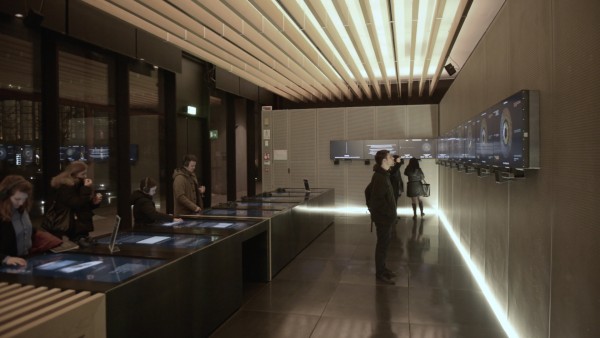AMYGDALA: Searching for Sentiment in a Sea of Tweets

A few months ago I stumbled across some stills from an installation that caught my eye. The installation, entitled "AMYGDALA," was created by the Italian digital arts studio fuse*. There was something striking, clean and elegant about the images, which only deepened when I went to fuse*'s web site to explore further. There I found a number of similarly striking documentations of installations, performances, designs and architectural projects. Some of the pieces share aesthetic overlap with the visual austerity of artists like Ryoji Ikeda or Carsten Nicolai, but fuse*'s works seem to be much more concerned with infusing their projects with interactivity. In many cases, there is a seductive simplicity of form, but the underlying concepts are most definitely not.
AMYGDALA, an installation that ran 24 hours a day for three months straight, is not merely a work about manipulating and translating a flow of data (Twitter, in this case), but one that grapples with whether you could come to some conclusion about what it all means. The piece explores the concept of 'Sentiment Analysis,’ or - as their project description puts it - how to "deduce the emotional status of messages shared by users across a network." The title of the piece itself is a direct reference to the Amygdala - that part of the brain that processes memory, decision-making, and emotional reactions. Like the part of the limbic system that the title references, the installation tries to make some sense of the incoming data, and then express it as a cohesive multi-sensory experience. The installation covers a lot of ground (both figuratively and literally) with elements of sculpture, video, sound, and interactivity all blending together. There is a sense of ritualism, repetition, and exploration that drifts out from the imagery and forms presented in the documentation. I'm drawn to work that speaks to both the visceral and the intellectual, and AMYGDALA appears to do just that. Unfortunately I didn't make it Bologna, Italy while the piece was still up, but if the documentation of AMYGDALA is any indication, it would have been well worth the trip.

The design studio is split up in to three separate but connected entities: fuse*, FUSE* Interactive, and FUSE* Architecture. Max is a regular tool that they use in the creation of their projects - for AMYGDALA, Max was used to control the audio components of the installation; sound texture generation, effects modulation, and spatialization, all controlled via OSC. The sound component is described as critical to the experience of the piece, as it “…metaphorically represents the process of the analysis and recognition of emotions.” I’ve contacted their team in the hopes that we can do a longer feature with them down the road, as I'm very interested to hear not only how Max fits in to their creative tool chain, but to hear more about the overarching themes and vision for the studio. In the meantime, I highly recommend checking out the other projects on their website.
by Ben Bracken on September 20, 2016

